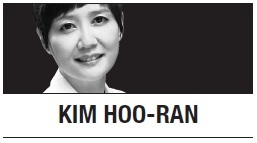 A Chicago high school samulnori club found itself struggling for survival recently, when it seemed the group may no longer have access to the instruments for the Korean percussion band.
A Chicago high school samulnori club found itself struggling for survival recently, when it seemed the group may no longer have access to the instruments for the Korean percussion band.The nine-year-old club at an elite public high school had been practicing at a nearby Korean culture center for several years, paying a small annual membership fee to rent the center’s instruments.
However, when the Korean culture center moved to a new location farther away from the high school, the club members were left with little choice but to disband. Without access to instruments, it would not be possible for the samulnori group to continue.
It appears that the samulnori club may be saved with a number of possibilities being considered, including arranging a carpool and fundraising for a bus to transport the students to the new culture center location. Of course, the best solution would be for the club to purchase its own instruments. It would be an investment that will pay handsome dividends for years to come.
The club currently has 20 members; five Korean-American students and 15 students of various ethnic backgrounds. The highlight of the club’s activities is the International Night at the school when it performs for the school community. Rousing salmulnori performances are always a hit with the audience.
A number of other traditional dances are performed at the school’s International Night, including a Filipino folk dance using bamboo sticks, a Japanese fishermen’s dance, mixed martial arts dance and Korean fan dance, among others.
The dances are a great opportunity for youngsters to learn about their own traditions as well as those of others. Through dance, the students naturally learn about music and history and also get an invaluable chance to experience for themselves the spirit of the people who have performed the dance for generations.
At a time when exclusionism is gaining foothold around the world, youngsters should continue to be exposed to different peoples and cultures. They need to realize first hand from early on that they are part of the larger community of mankind that transcends nationalities, ethnicities. Whenever possible, they should be given opportunities with people of different religions, traditions and ways of life.
Hence the efforts of students at the aforementioned high school ought to be commended and appreciated. These are youngsters who are enthusiastic about discovering their roots as well as cultures that are foreign to them. Adults should support them in their endeavors.
The members of the Korean Fan Dance club at the school have one big wish for next year: matching hanbok made especially for dancing. The 12 dancers currently perform wearing hanbok donated by churches and individuals which results in clashing colors and size issues.
Their old fans were replaced last year when one of the student’s parents donated new fans from Korea. The old fans had given the students splinters and feathers kept falling on the stage.
Watching their performance on YouTube, I could not help but be moved by all the hard work that had gone into the performance, spending hours on choosing the music, creating the choreography and practicing the routine.
I became greatly frustrated upon hearing that one of the members stayed up all night making hair ribbons, or daenggi. The club did not have the money to buy daenggi, so a student had taken matters into her own hands, literally. Of course, a proper fan dance accoutrement requires an elaborate headpiece called jokduri. For the group that cannot afford simple ribbons, however, jokduri is out of reach.
There is a lot of talk about globalization of Korean culture and much effort is being poured into promoting Korean pop culture. And it is high time that youngsters around the world are given opportunities to experience Korean culture. Where students have initiated such efforts by themselves, the task is simpler -- support them financially when necessary.
The government could look into ways to support such projects, with no strings attached. Targeting youngsters who will become leaders of tomorrow is an investment in the future, a prudent exercise of soft power.
The private sector could play a role, too. Many Korean conglomerates have offices in major cities around the globe. How about supporting local schools and students who already have Korean culture programs and clubs? Such efforts would make for an excellent corporate social responsibility program that boosts the companies’ image in the community as well as create real ties with the communities in which they do business.
In my mind’s eye, I see the young women dancing in matching hanbok with dainty jokduri on their heads, their skirts making beautiful circles as they twirl. Perhaps the samulnori group will soon be beating their own drums and clashing their own cymbals
By Kim Hoo-ran
Kim Hoo-ran is a senior culture writer at The Korea Herald. She can be reached at khooran@heraldcorp.com
-
Articles by Korea Herald



![[Herald Interview] 'Amid aging population, Korea to invite more young professionals from overseas'](http://res.heraldm.com/phpwas/restmb_idxmake.php?idx=644&simg=/content/image/2024/04/24/20240424050844_0.jpg&u=20240424200058)















